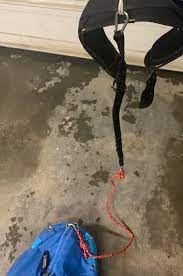
Coming up this weekend will be my 5th year running the Susitna 100. After shortening the race to 50 miles last year due to COVID, it will be great to be back to the full course this year – although COVID is still complicating things, closing one of the primary checkpoints, and causing a large section of the race to be re-routed.
As usual, the week or so leading up to a race I turn into an amateur meteorologist, closely watching what the weather is doing. Suffice it to say, this is the not the forecast you want to see leading up to your race:

This year is shaping up to be a repeat of the 2019 sufferfest. One thing I’ll do differently this year is bring my Neos overboots (the experience of 2019 is what prompted me to get them in the first place). I’ll also bring poles, which will be useful with the amount of hiking I’ll likely be doing. I would think about bringing snowshoes, but since I haven’t trained with them, I think they would just slow me down too much.
I have made one big change to my sled setup this year. In the past I’ve always used a rigid pole to connect my belt to the sled, mainly to keep the sled from running into me. Recently, I was running with some friends who are all veterans of the 350 mile Iditarod Trail Invitational, and they swore by using a slack line instead, for several reasons. With a rigid pole, your hips really get pushed around with the weight of the sled, which can really start to cause back pain as you get further into the race. For a race like Susitna that is relatively flat, there really aren’t too many places where you have to worry about the sled running into you. You just have to be aware of those, and grab onto the line and “walk” your sled down the hill.

The biggest game changer for me is the ability to just turn around and get into my sled without having to completely undo my belt. Especially when it’s really cold, it gets increasingly difficult to do anything that requires fine motor skills like messing with my belt, or zipping/unzipping a jacket. There are times when I’ll go longer than I should getting into my sled for things like food, water, or extra layers of clothes, simply because I don’t want to deal with the hassle, or have my hands get even colder than they already are. I’ve done several long runs with this new setup, and I’m a big fan.
Considering the likelihood of lots of snow and poor trail conditions, this week I’m working on mentally preparing myself for a long slog out there. I’m gathering lots of my favorite trails snacks, and loading up my iPod with plenty of good music and podcasts to help pass the hours.
